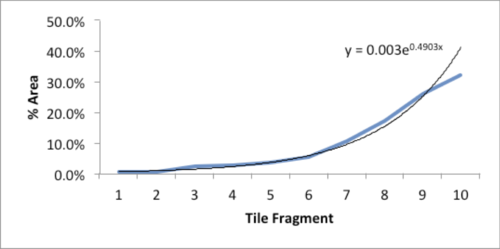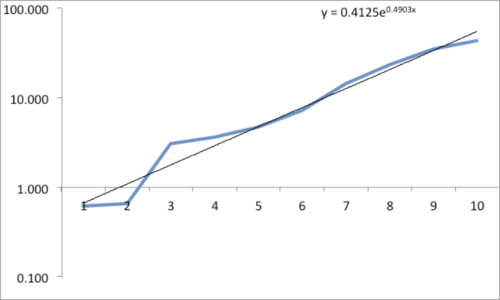Sandbox
Some math doodles
<math>P \left({A_1 \cup A_2}\right) = P\left({A_1}\right) + P\left({A_2}\right) -P \left({A_1 \cap A_2}\right)</math>
Baysian Statistics
The odds, continually updated
by F. D. Flam 29 September, 2014
This essay focuses on the rise of Bayesian techniques in statistics, noting that increases in computing power have enabled analysis that would have been intractable a generation ago. Among the diverse contemporary statistical applications mentioned here are a successful Coast Guard search for a missing fisherman, the search for planets outside the solar system, and estimates of the age of the universe.
The article actually traces the history of statistics much further back, beginning with John Arbuthnot's analysis of demographic data (citing Stephen Senn's Dicing with Death)! As an early example of a hypothesis test, it discusses Daniel Bernoulli's calculations involving the orbits of planets (which all lie near to a plane rather than appearing random). Columbia University statistician Andrew Gelman is quoted raising concerns over the frequentist approach here. Of course, the article mentions the Reverend Thomas Bayes. Alas, it cannot avoid invoking the infamous Monty Hall problem as an example of a counterintuitive result of Bayes Theorem! Indeed, a large picture of the Monty himself in front of his game show curtain appears front and center!
Chance News has often featured poor descriptions of frequentist p-values in news stories. So it is a relief to read
The essence of the frequentist technique is to apply probability to data. If you suspect your friend has a weighted coin, for example, and you observe that it came up heads nine times out of 10, a frequentist would calculate the probability of getting such a result with an unweighted coin. The answer (about 1 percent) is not a direct measure of the probability that the coin is weighted; it’s a measure of how improbable the nine-in-10 result is — a piece of information that can be useful in investigating your suspicion. <\blockquote>
Accidental insights
My collective understanding of Power Laws would fit beneath the shallow end of the long tail. Curiosity, however, easily fills the fat end. I long have been intrigued by the concept and the surprisingly common appearance of power laws in varied natural, social and organizational dynamics. But, am I just seeing a statistical novelty or is there meaning and utility in Power Law relationships? Here’s a case in point.
While carrying a pair of 10 lb. hand weights one, by chance, slipped from my grasp and fell onto a piece of ceramic tile I had left on the carpeted floor. The fractured tile was inconsequential, meant for the trash.
As I stared, slightly annoyed, at the mess, a favorite maxim of the Greek philosopher, Epictetus, came to mind: “On the occasion of every accident that befalls you, turn to yourself and ask what power you have to put it to use.” Could this array of large and small polygons form a Power Law? With curiosity piqued, I collected all the fragments and measured the area of each piece.
Piece Sq. Inches % of Total 1 43.25 31.9% 2 35.25 26.0% 3 23.25 17.2% 4 14.10 10.4% 5 7.10 5.2% 6 4.70 3.5% 7 3.60 2.7% 8 3.03 2.2% 9 0.66 0.5% 10 0.61 0.5% The data and plot look like a Power Law distribution. The first plot is an exponential fit of percent total area. The second plot is same data on a log normal format. Clue: Ok, data fits a straight line. I found myself again in the shallow end of the knowledge curve. Does the data reflect a Power Law or something else, and if it does what does it reflect? What insights can I gain from this accident? Favorite maxims of Epictetus and Pasteur echoed in my head: “On the occasion of every accident that befalls you, remember to turn to yourself and inquire what power you have to turn it to use” and “Chance favors only the prepared mind.”
My “prepared” mind searched for answers, leading me down varied learning paths. Tapping the power of networks, I dropped a note to Chance News editor Bill Peterson. His quick web search surfaced a story from Nature News on research by Hans Herrmann, et. al. Shattered eggs reveal secrets of explosions. As described there, researchers have found power-law relationships for the fragments produced by shattering a pane of glass or breaking a solid object, such as a stone. Seems there is a science underpinning how things break and explode; potentially useful in Forensic reconstructions. Bill also provided a link to a vignette from CRAN describing a maximum likelihood procedure for fitting a Power Law relationship. I am now learning my way through that.
Submitted by William Montante


